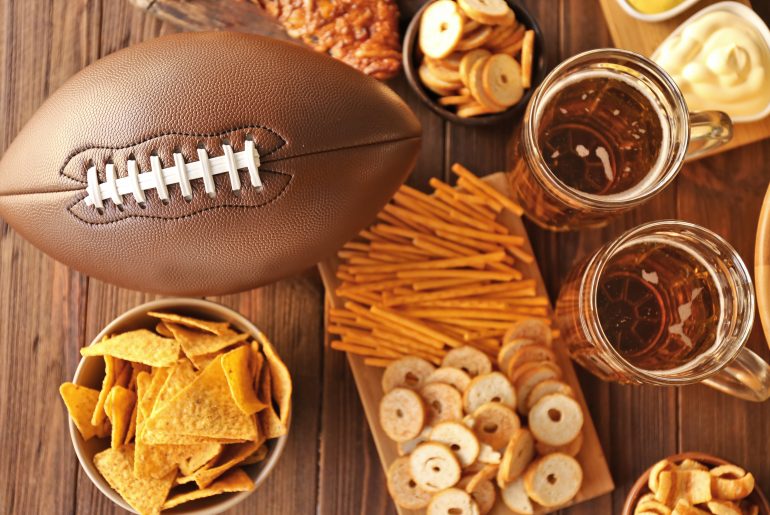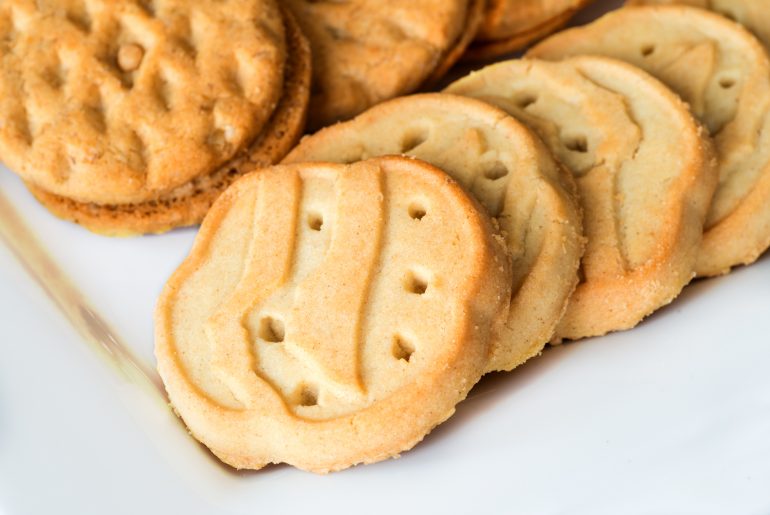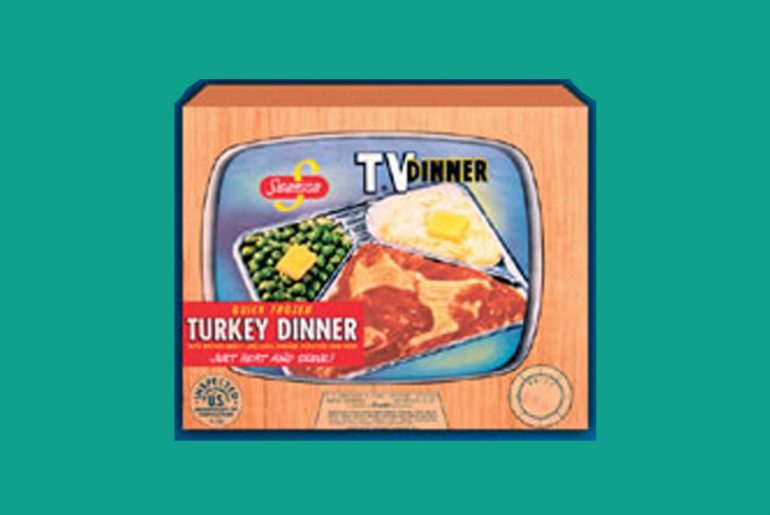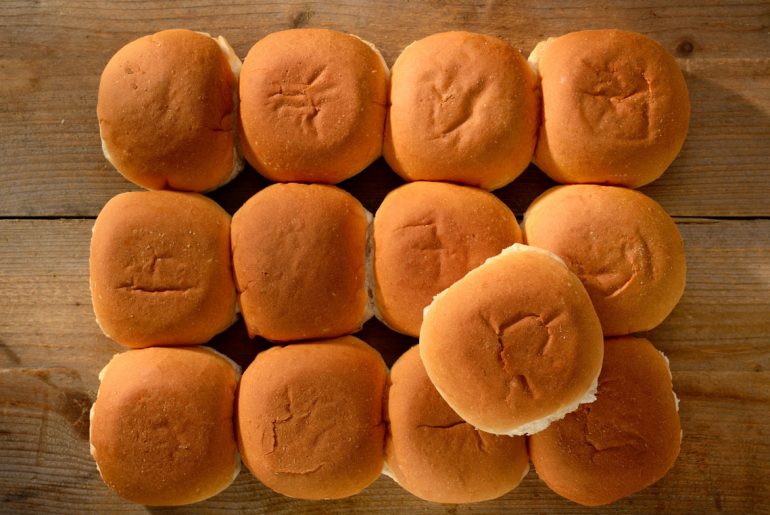Nothing says “October” more than a beautiful, orange pumpkin, but this most beloved symbol of fall is hiding some fun little secrets. Think you know everything there is to know about these great big gourds? Here are 15 fun facts you never knew about pumpkins: 1. Pumpkins are fruits, not vegetables Fruits are considered to be the part of the plant that has seeds on the inside. By this definition, a pumpkin is definitely a fruit. They’re a member of the gourd family, which includes other fruits like watermelon and winter squash. 2. Pumpkin pie wasn’t served at the Pilgrim’s Thanksgiving Despite our modern day obsession with pumpkin pie this time of year, it was no where to be found at the original Thanksgiving feast of 1621. Pilgrims wouldn’t have had butter or flour for making pie crust, let alone an oven for baking. Some historians speculate that the pilgrims…
10 foods you didn’t know were actually American
American cuisine, the great melting pot, is known for adopting foods from all over the world as its own. But there are plenty of foods invented in the United States that you might wrongfully assume come from other cultures. No matter where a dish is born, it doesn’t make it any less delicious. So let’s give credit where credit is due. Here are 10 “foreign” foods that are actually American inventions. 1. German Chocolate Cake The name might bring to mind decadent Bavarian pastries, but this coconut-pecan frosted chocolate cake owes its name not to the country of Germany, but to an English-born candy maker named Samuel German. German developed a type of making chocolate for the Massachusetts-based Baker’s Chocolate Company — his employer at the time. The product was marketed as “Baker’s German’s Sweet Chocolate.” In 1957, a Dallas housewife, Mrs. George Clay, used the chocolate in a recipe she…
10 Surprising facts about Jelly Beans
Unless you’re an uber-fan, you probably don’t think about jelly beans a whole lot until Easter rolls around — then the little candies take center stage. But what do you really know about these sweet pops of flavor? Here are some juicy details. 1. It can take 7 to 14 days to make A jelly bean. Making jelly beans is no easy task. It requires many steps from liquifying sugar and flavors to pouring into tiny bean-shaped molds and letting dry overnight. The candies then undergo a process called “panning.” They’re transferred to a rotating drum where flavors and colors are added as they spin. Sugar is then added to create the bean’s hard exterior shell. Finally, a hot syrupy wax is applied to give them their shine. After all of that, the beans still need to go through packing and shipping. 2. the battle for favorite flavor. For two…
14 Fun facts about Peeps
Forget groundhog shadows or tulips. The first real sign of spring are bright yellow Peeps stocking the shelves at your local grocery store. Marshmallow Peeps are everyone’s favorite non-chocolate Easter candy — they even outsell jelly beans! Americans will eat 1.5 billion Marshmallow Peeps and Bunnies this spring, but what do you really know about these sugar crystal coated, brightly-colored bird-shaped mallows? Discover 14 fun facts about Peeps: 1. Making Peeps used to be a really long process. It used to take 27 hours to make a Peep. The first Peeps were squeezed one at a time from a pastry tube before receiving hand painted eyes. Today, with an automated manufacturing process, a Peep takes just six minutes to make. 2. About 5.5 million Peeps are born every single day. Machines crank out 3,500 Peeps per minute — that’s nearly 2 billion Peeps per year! 3. Peeps were originally produced by…
This is how much you need to exercise to burn off your Super Bowl snacks
There’s no question about it: Super Bowl Sunday is a tough day to eat healthy. Even if you’re not a fan of either team, you still might find yourself at a party, socializing, trying not to let those deep fried wings and blue cheese tempt you. The Super Bowl has become one of the biggest food days of the year, second only to Thanksgiving. During the four-hour Super Bowl extravaganza, the average party-goer will consume about 1,200 calories and 50 grams of fat. For most people, splurging one day isn’t going to make much of a difference. However, to help put the damage in perspective, Dietdetective.com did a little nutritional math and replaced calories with exactly how much exercise you would have to do to burn off your bad Game Day dietary decisions. Let’s have some fun… PIZZA To burn off three slices of Pizza Hut Pepperoni Lovers Pan Pizza, you…
10 delicious facts you never knew about Girl Scout cookies
Just in time to spoil your New Year’s Resolution, badge-covered vest wearing Girl Scouts arrive at your door with their brilliant fundraising idea — cookies. Thin Mints, Samoas, Tagalongs: You know you can’t resist. If you haven’t placed your order yet this year, better hurry. More than 2.6 million Girl Scouts in the United States will be turning in their cookie orders soon. And while you’re looking forward to receiving your cookies sometime in weeks that follow, its also worth reflecting on the storied past of these iconic cookies. The entrepreneurial cookie initiative dates back a whole lot further than you might expect. So listen up and earn your merit badge for the day with these 10 facts about Girl Scout cookies. 1. Home baked business In 1917, just five years after Juliette Gordon Low founded the Girl Scouts in Savannah, Georgia, the Mistletoe Troop in Muskogee, Oklahoma decided to sell cookies…
What, exactly, are sugar plums?
‘Twas the Night Before Christmas’ by Clement Clarke Moore paints a peaceful Christmas Eve scene, with new-fallen snow, carefully hung stockings, and visions of sugar plums. And you’ve probably heard of Pyotr Ilyich Tchaikovsky’s Dance of the Sugar Plum Fairy from “The Nutcracker.” But have you ever stopped to ask what, exactly, is a sugar plum? While the recipe for sugar plums has varied, what they’re not, and never were, is sugar-coated plums. The truth is that sugar plums are not linked to fruit or any plum-like substance. According to the Oxford English Dictionary of the day, a sugar plum is a comfit. Comfits are seeds, nuts, or piece of spice coated with a hard sugar shell — not unlike the outer crunchy shell of an M&M or Jordan almond. The first sugar plums date back to the 1600s when popular centers for comfits would have included caraway, fennel, coriander, almonds, walnuts, ginger,…
The first TV dinner was a Thanksgiving feast
While you may not think America’s most celebrated homemade holiday feast has anything to do with a modest frozen TV dinner, the two forever share a slice of history. The first mass produced TV dinner was, in fact, literally made from Thanksgiving leftovers. As the story goes, in 1952, someone in charge of purchasing at Omaha-based C.A. Swanson & Sons seriously overestimated how much turkey Americans would consume that Thanksgiving. With 520,000 pounds of frozen turkey to unload, a company salesman named Gerry Thomas had a light bulb idea. Thomas, having been inspired by the neatly packaged Pan Am Airlines airplane food, ordered 5,000 aluminum trays. He recruited women, armed with scoops and spatulas, to run his culinary assembly line, and work began making mini Thanksgiving feasts full of turkey, corn-bread dressing, peas, and sweet potatoes, thus creating the first-ever TV dinner. The original TV Dinners sold for 98 cents…
25 fun facts you never knew about apples
Crisp, sweet, and delicious, bushels of apples are a true symbol that autumn has arrived. Whether you stroll through the apple orchard and pick some yourself, or scoop a few pecks up from the store, Americans just can’t get enough. By volume, we eat more apples than any other fruit. But for all the love we show to apples, how much do you actually know about our favorite fall fruit? As you’re sipping on that warm glass of apple cider and snacking on some apples slices, consider these 25 fun facts about apples: 1. Archaeologists have found evidence that people have been eating apples since 6,500B.C. 2. The science of growing apples is called pomology. 3. There are more than 7,500 apple varieties in the world — about 2,500 varieties grown in the United States. About 100 of those are sold commercially. Apples are the second-most valuable fruit grown in the…
This is why a baker’s dozen is 13
Ask for a dozen roses from a florist or a dozen eggs from a farmer, and you’ll expect to receive an even 12 items. But if you ask a baker for a dozen doughnuts, you could go home with 13, or a baker’s dozen. Not that we’re complaining, but why do bakers have their own unit of measurement? The next time you’re snacking on that 13th bonus treat, you can thank crooked bakers back in medieval England. According to Encyclopedia Britannica, there were laws that regulated that a loaf of bread was worth the price of the wheat used to make it. Bakers caught overpricing undersized loaves — apparently a practice common enough to necessitate regulation — saw harsh penalties including fines, beatings, and jail time. Anyone who has ever made baked goods knows that getting them to come out the same size isn’t easy. In the Middle Ages, most…










